Expert Dermal Fillers in Atlanta – Enhance Your Natural Beauty
Say goodbye to volume loss and hello to a refreshed look with Dermal Fillers. These subtle enhancements, made with hyaluronic acid or bio-stimulants, are gently injected beneath the skin to restore natural fullness and smoothness.
Dermal Fillers in Atlanta – Non-Surgical Facial Rejuvenation
Looking for a safe, natural way to refresh your appearance? Dermal fillers in Atlanta are one of today’s most trusted non-surgical cosmetic treatments for restoring youthful skin. For over 15 years, these treatments have helped men and women smooth fine lines, plump lips, lift cheeks, and enhance facial contours—with results that look subtle and natural.
As we age, the skin loses collagen, elastin, and volume, which can lead to wrinkles, sagging, and hollow areas. Expertly administered dermal filler injections are the perfect solution to restore lost volume, rejuvenate your skin, and create a refreshed, youthful glow—all without surgery or downtime.
Every treatment is customized to your needs. Whether you want lip fillers for fuller lips, cheek fillers for lift and definition, under-eye fillers to reduce hollowness, or wrinkle fillers to smooth aging lines, our specialists ensure natural-looking results that enhance your beauty.
Benefits of Dermal Fillers in Atlanta
- Smooth fine lines and wrinkles instantly
- Restore volume in cheeks, lips, and under-eyes
- Enhance facial balance and contours
- Non-surgical, quick, and long-lasting results
- Boost confidence with a youthful, radiant look

DERMAL FILLERS
What are Dermal Fillers?
Dermal fillers are a specific category of injectable substances that the FDA has approved to restore lost facial volume and improve the appearance of fine lines and wrinkles. Dermal fillers do just what they sound like: they fill in an area where deficiencies exist to add volume where it’s been lost. There are a handful of different dermal fillers in the aesthetic world, and the most commonly used brands include:




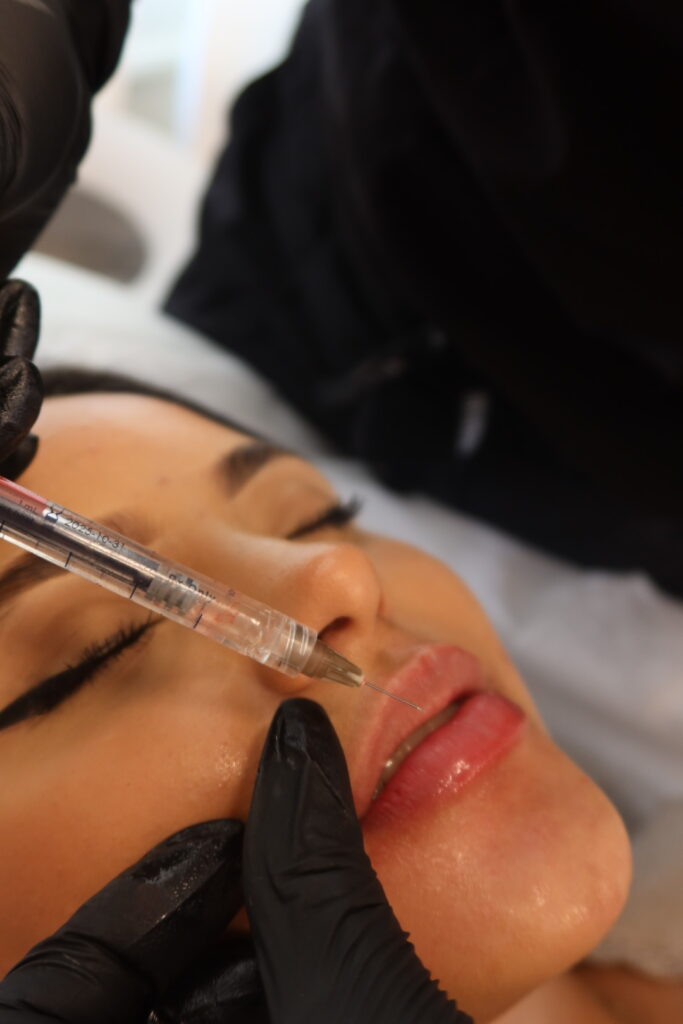
Regardless of the type of dermal filler injected into the skin, they all have a common thread: target lines and wrinkles and add volume. And unlike neurotoxins, which relax the muscles to improve fine lines and wrinkles, dermal fillers work by drawing water to the area to plump it.
Within the dermal filler category are different types of fillers depending on the active ingredient and formulation of the filler that causes a plumping effect. This includes:


These first fill and then encourage the skin to create new collagen for a plumping effect. They either contain calcium hydroxylapatite or Poly-L lactic acid.
Best HA Fillers in Atlanta
HA dermal fillers are among the most popular and widely used options because they closely resemble the body’s natural substance and are reversible (unlike some other fillers). Hyaluronic acid fillers are also commonly found in moisturizing skincare products, making them safe and familiar for cosmetic use.
The dermal fillers that we use at EcoBel Med Spa include:









DERMAL FILLERS
How Dermal Fillers Work
Dermal fillers add volume to the skin by injecting a synthetic filler—most commonly HA dermal fillers (hyaluronic acid fillers)—beneath the surface. Once placed, the filler provides an immediate volumizing effect that smooths out flat or volume-deficient areas while filling in hollows, fine lines, and wrinkles. Placing HA under the skin also attracts water, giving a natural plumping effect, as it can hold up to 1,000 times its weight in water. This makes dermal fillers especially popular for facial rejuvenation and enhancing features such as dermal fillers for lips.
All dermal fillers are injected under the skin with either a fine needle or a cannula, depending on the injector’s technique. Most fillers also contain lidocaine, ensuring the area becomes numb quickly, while some patients require topical numbing cream for added comfort. The entire procedure is quick, usually completed in 30 minutes or less, with instant results. By the time you leave your appointment, you’ll notice restored facial volume, smoother skin, and a refreshed appearance. If you’re searching for dermal fillers near me or safe, professional dermal fillers in Atlanta, Ecobel Med Spa Clinic provides customized treatments designed to enhance your natural beauty.
The Different Types of Dermal Fillers
Hyaluronic Acid
The most popular injectable dermal filler is hyaluronic acid (HA), which utilizes a synthetic gel of natural substances found within the body. HA fillers are soft, which leads to natural-looking results, yet vary in density and thickness to create different degrees of fullness.
Lasts: 6 to 12 months or longer, depending on the specific brand used and the area treated

A thicker filler used for adding long-lasting support to the cheeks, chin, and jawline
Also used for the cheeks, chin, and jawline in addition to the nasolabial folds and is a good option for those with seriously volume-deficient features and thin skin
Used to create natural-looking, full yet soft lips
Best for the jawline and nasolabial folds that lasts up to 18 months
Athicker filler used for deeper wrinkles and folds

One of the OG HA fillers, is often injected off-label in the tear troughs under the eyes to refresh them.
Is injected along the jawline when definition is needed
Works best for softening laugh and marionette lines and nasolabial folds
Is reserved for treating the cheekbones to provide a lift
An FDA-approved filler to treat wrinkles that exist around the mouth
A filler specific to the lips to enhance them
Is injected into the cheekbones and midface for added definition and lift


DERMAL FILLERS
Who are Dermal Fillers For?
Dermal fillers work for different age-related conditions and therefore are a suitable solution for men and women of all ages. Whether you’re dealing with minor wrinkles and volume loss or severe changes, there are several dermal fillers to choose from to achieve your goals.
Acne scars
Minimally saggy skin
Flat facial features
Fine lines and wrinkles
Thin lips
Weak facial contour, structure, and balance
Dermal Fillers help improve the symptoms above but are not recommended for anyone with an active breakout of oral herpes; uncontrollable diabetes, issues with blood clotting; or connective tissue disorders.
DERMAL FILLERS
The Results
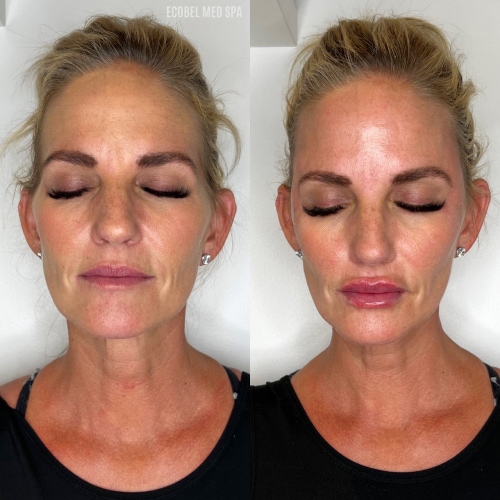
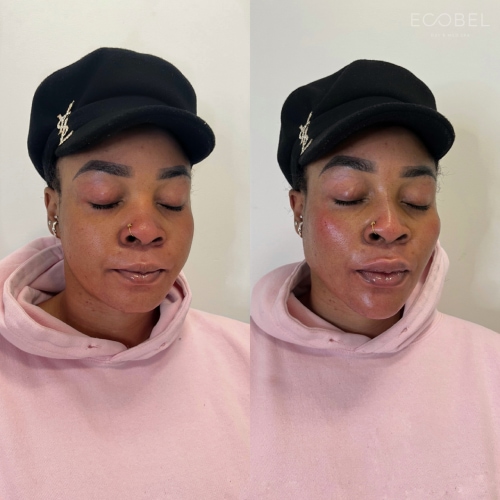
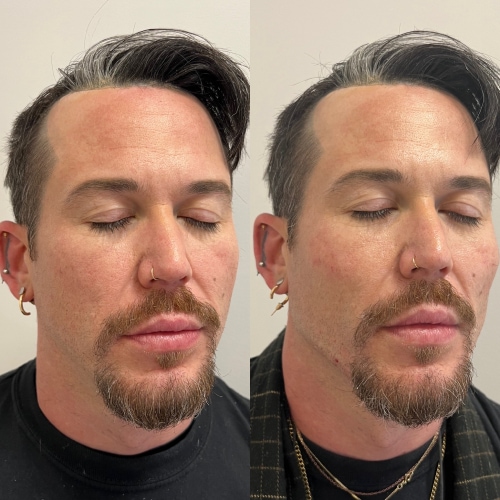
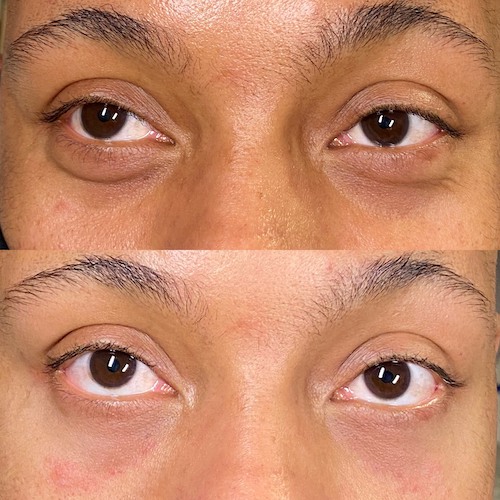
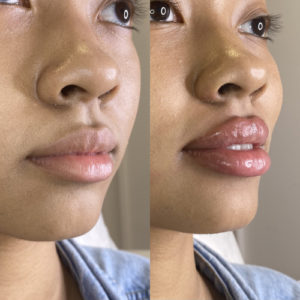

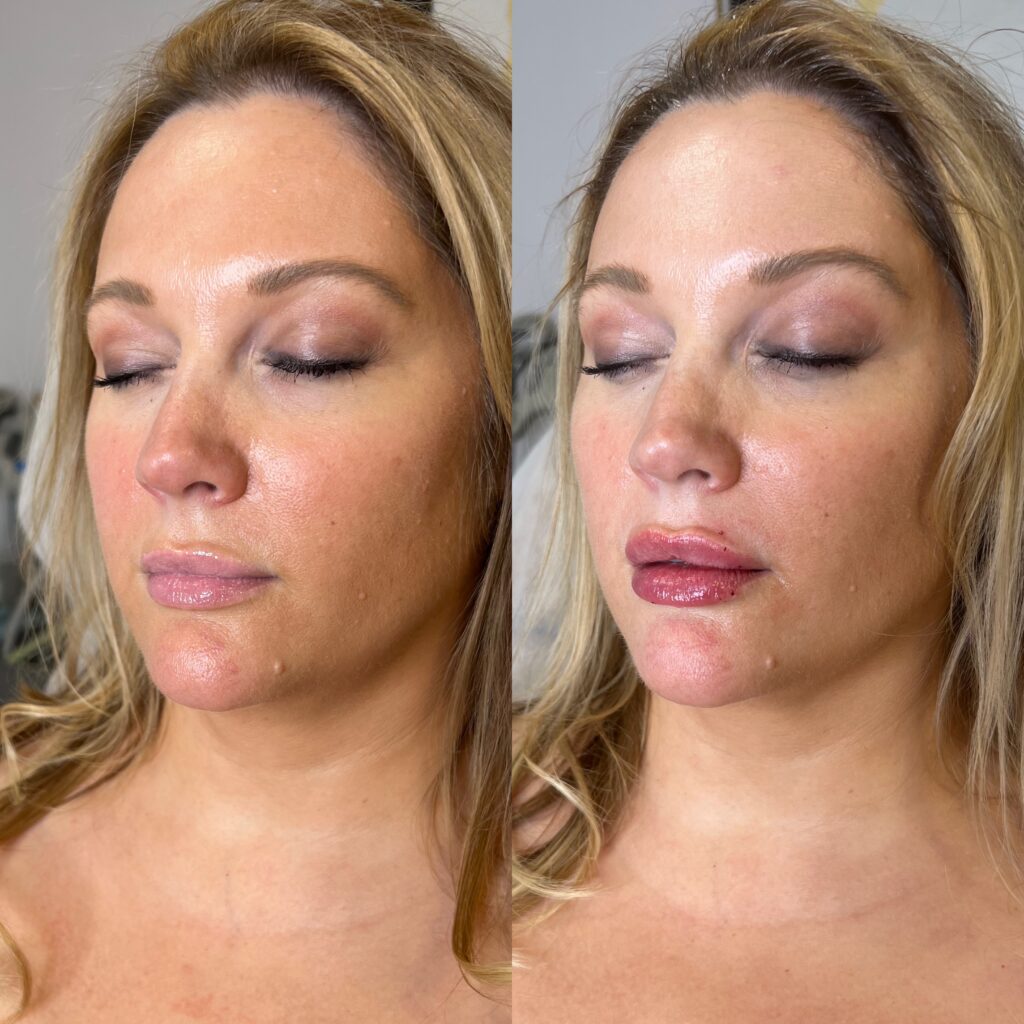



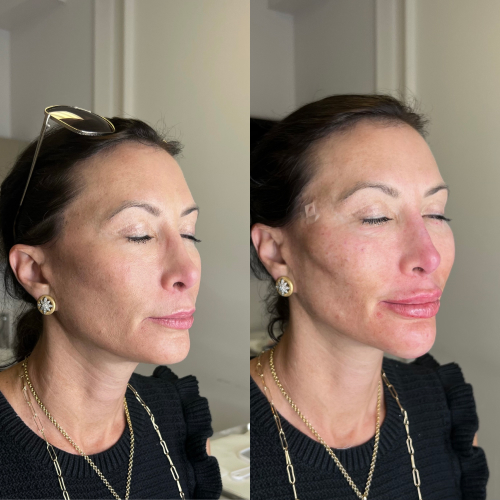
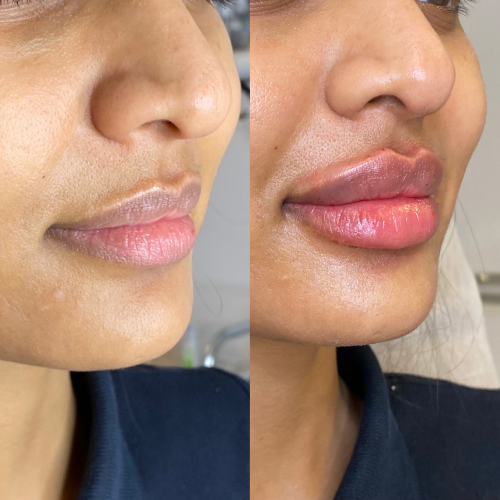


Even if you don’t opt for a collagen-stimulating filler, you may still reap the benefits of added collagen with HA fillers. That’s because injecting the product stimulates fibroblast activity to create new collagen. So although it won’t be nearly as much collagen as with a collagen-stimulating filler, there is still some benefit.
On average, the results of dermal fillers last six months or longer, depending on what is injected and the area treated. You may need touch-ups after the initial appointment to round out the effects to achieve optimal results. A good skincare routine and a healthy lifestyle will help improve the results and longevity. Different fillers have different compositions, giving way to longer-lasting results. For example, Juvéderm Voluma and Sculptra can last up to two years. Others, like Restylane, can last about six months.
The Benefits of Dermal Filler
There are numerous benefits to using dermal fillers besides adding volume and achieving a more youthful, restored appearance. Most dermal fillers are praised for enhancing a specific facial feature, like the lips, or sculpting and balancing the face while treating the common signs of aging. Other benefits of dermal fillers include:
- Stimulates collagen production
- Adds volume
- Smoothes texture
- Decreases the appearance of fine lines and wrinkles
- HA exists naturally in the body
- It lasts up to a year
Fillers can also be used in various areas of the face (some areas are considered off-label, meaning they do not hold FDA approval but are widely used), such as:
- The temples
- The tear troughs
- The cheeks
- Smile lines
- The lips
- The chin
- The jawline
- The hands
- The earlobes

DERMAL FILLERS
How Much Do Dermal Fillers Cost?
Every patient is different, so we recommend a consultation to determine the cost of your dermal filler treatment. Our experienced team of skin experts and medical providers can further discuss the treatment with you and determine which type of filler is right for you.
The treatment is tailored to your needs, which is why the cost ranges, although most facial fillers start at $650 per area. Our team can customize a skin package to help you obtain the desired results. A consultation with our staff will ensure more accurate pricing.
DERMAL FILLERS
Common FAQs
It all depends on what type of filler was injected. HA fillers are reversible, but all others are not. HA fillers can easily be dissolved by injecting hyaluronidase into the area where the filler exists. Hyaluronidase is an enzyme that breaks down the filler to bring the area back to baseline. As far as other fillers, there’s no easy or safe way to undo their effects, so, unfortunately, you’ll have to wait it out and let them naturally break down.
While you won’t need to take time off work to recover, nor is there technically any downtime, it is common to notice some minor redness, swelling, bruising, and soreness immediately after the procedure. However, this should allow you to return to work after injections. We recommend scheduling injections around your work schedule if you are concerned about social downtime.
The most common side effects of dermal fillers include bruising, edema, and erythema. Applying ice directly to the injection site after injections may help to reduce swelling and bruising.
No matter what type of dermal filler you opt for, you will see results immediately after treatment.
The length of the results depends on the product used, the area injected, the degree of aging, and your skin. Most filler injections last 6–12 months, although some last longer. It’s essential to maintain your results with regular treatments. Otherwise, the results will return to baseline.
The process is generally painless, although topical anesthetics may be used to reduce pain during treatment. Additionally, all Juvéderm and Restylane fillers include lidocaine, which has been shown to reduce pain.
To minimize swelling and bruising, avoid alcohol and caffeine for 48 hours before and after your treatment. Also, avoid taking aspirin, flax oil, cod liver oil, vitamins E or A, or other fatty acids one week before treatment. Avoid wearing makeup directly after treatment. Wait at least 12 hours. Do not exercise for 24 hours or go in the sauna and avoid sun/heat for 48 hours.
Your injector may recommend Arnica tablets and icing the area to help minimize bruising and swelling.
